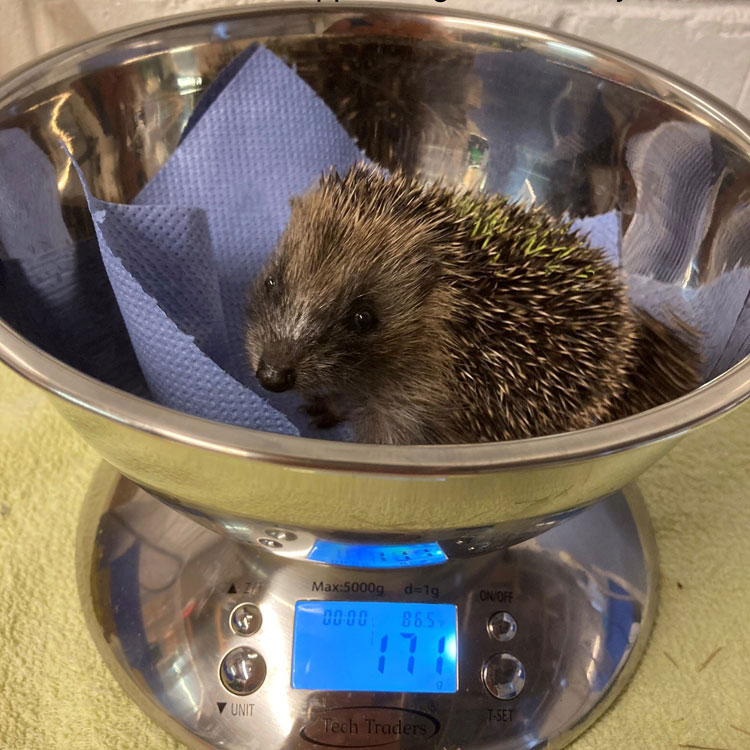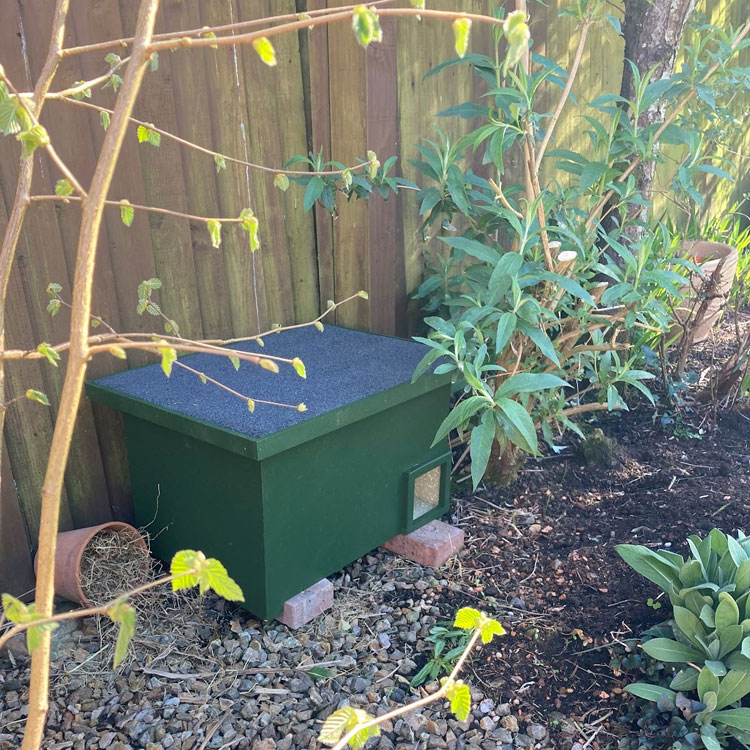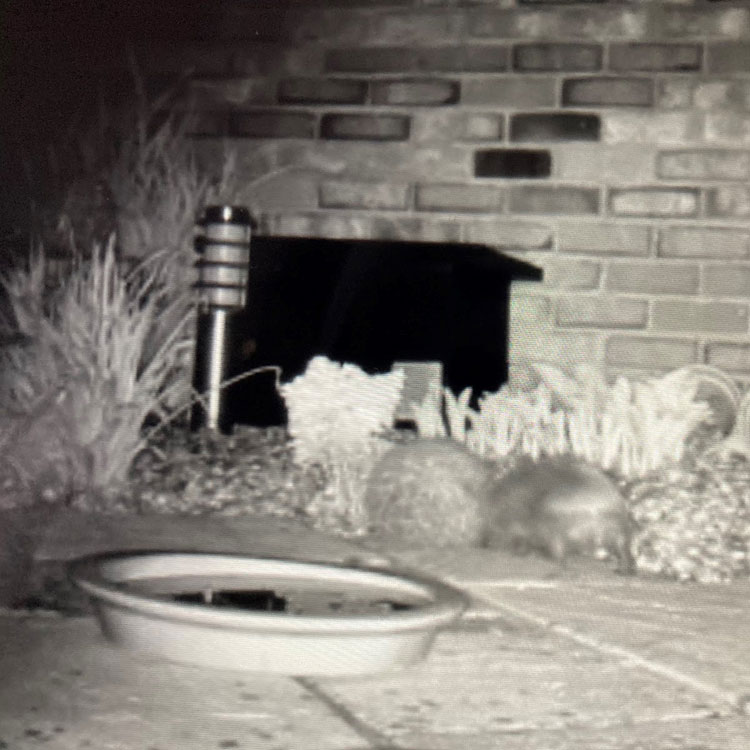Home gardens across Newport are currently occupied by little sleeping hogs thanks to Monmouthshire and Newport LNP support and funding – here’s how you can help hedgehogs in your area over the coming winter months.
Hedgehog numbers in Wales have drastically declined over the past twenty years, with numbers plummeting from 1.5 million in 1995 to less than 500,000 today.
The decline in the hedgehog population is reflective of the decline in the quality of our natural environment. This means unfortunately hedgehogs are not the only ones effected, with many of our beloved species under threat of extinction.
That’s why some of our Local Nature Partnerships (LNPs) across Wales have been supporting people and communities to do what they can to help save the hedgehogs.
Newport leading the way
In Newport, Celtic Horizons Litter Pickers Group have been instrumental in bringing about wider environmental changes across Newport, in particular to the management of roadside verges and grassland in and around residential areas.
In supporting their LNP and Newport City Council to make these changes, the group began to look more broadly at other biodiversity enhancements they could do to help their local wildlife thrive.
Already involved in a number of local pollinator projects, the group, with the support of a local hedgehog rescue and wildlife volunteers, created the ‘Home Help for Hedgehogs’ Project.
‘It fitted nicely with the aims of the Monmouthshire and Newport LNP Small Projects Fund’, says Newport’s LNP coordinator Lucy Arnold-Matthews. ‘At a time when the whole country was in and out of lockdowns, this was a project that enabled people to engage with nature in their own back gardens whilst supporting the wider hedgehog population.’
Hog diaries
Through the project, residents across Newport installed hedgehog homes in their urban and suburban gardens, providing food, shelter and water to save this endangered species.
The rescuers were supported by local Hog Champions Sue, Helen and Jane from the Rescue Centre, who gave top tips and guidance on what food to put out, where, the importance of access and shelter.
Fortunately for us, the rescuers also kept a diary to monitor activity in their gardens, giving all of us a sneak peek into hog behaviour.
‘I can’t tell you what a pleasure and a privilege it’s been to have been adopted by Erin the hedgehog’, says one participant. ‘It has got me through the lockdown and done wonders for my mental health.
‘He has consistently used his hotel room right through the winter [and] I have seen him double in size while I have kept him fed through the winter months.’
Once the weather improved I expected Erin to be off looking for a Mrs Erin, but no!!!! He stays most days. I have been given a project camera to borrow for a few weeks and I have to say I am now completely smitten.’



How you can help
Our gardens are key to saving this wonderful species. If you want to help, here are ten top tips to make your garden hedgehog-friendly:
1) Link your garden with Hedgehog Highways
If you have an enclosed garden you might be getting in the way of hedgehog migration plans. Initiatives like Vale LNP’s Hedgehog Highways scheme are linking gardens across Penarth by encouraging community members to add holes in their fences for hogs to squeeze through. Why not check if your area has a similar initiative, and if not, set one up!
2) Make your pond safe with a ramp
Did you know hedgehogs are great swimmers? But they do struggle to get out of the water, so creating a ramp or a beach area out of your pond using chicken wire, stones or wood will stop them from getting stuck in the water
3) Create a wild corner
Letting your flowers, grass and weeds grow wild in one corner of your garden will provide vital shelter (and tasty food) for hedgehogs throughout the winter. And there are loads of additional benefits to having a wild garden, such as helping our butterflies and bees. Plantlife’s “No Mow May” campaign will tell you more.
4) Deal with netting and litter
Hedgehogs can easily get caught in netting and litter, so make sure your garden is litter free and hedgehog friendly! Make sure any netting is at least a foot off the floor so that they can get under.
5) Put out food and water
Hedgehogs normally eat all sorts of insects, but you can supplement their food with good quality meaty cat or dog food - dry is better in the winter so it doesn’t freeze. Water is also important all year round, so make sure water bowls are topped up regularly and don’t freeze over!
6) Stop using chemicals
Chemicals are not only toxic to hedgehogs, but also kill off the insects they love eating so much (and need to eat to stay alive!) The Wildlife Trusts have written a great article on how to make your garden a chemical-free zone.
7) Checking for hogs
Hedgehogs won’t run away at the sound of machinery – their defence mechanism is to curl up into a ball, so make sure you’ve checked for them before you start strimming. Also, if you want to light a bonfire, either build it the same day as lighting or move it on the day of lighting to ensure there are no hibernating hogs in there.
8) Make a home
There’s nothing better than a log pile for hedgehogs – they’re full of food and create a great shelter all year round. You can also buy or build your own hedgehog house - but make sure it’s solid wood with a base and a waterproof roof, with either a tunnel entrance or an internal baffle to keep predators out. You’ve already read how much the Newport rescuers love having these little creatures in their garden, and you can too!
9) Locate your nearest rescue
If you spot a hedgehog out in the daytime, it is sick and needs to be taken to hedgehog rescue as a matter of emergency. It’s a good idea to find out where your nearest hedgehog rescue is – store the details in your phone ready for action! You can locate your nearest hedgehog rescue at www.helpwildlife.co.uk
How to rescue a hedgehog:
10) Contact your LNP!
Finally, why not get in touch with your LNP to learn more about any hedgehog projects happening near you – or advice and guidance on how to set up your own.
2026 LNP Cymruwebsite by WiSS